Sentra takes Nissan out of the park for 2013
By John Gilbert
SAN FRANCISCO, CALIF. — In Nissan’s ever-expanding universe of cars and trucks, the compact Sentra has been relegated to something akin to a support role. Sort of like a durable and dependable infielder or utility player who is both vital to success and easily overlooked while the stars hit home runs and make the big headlines.
World Series time in 2012, however, is the perfect time to find out how invaluable such performers are in clutch situations. The San Francisco Giants were winning their way to a World Series date with the Detroit Tigers when Nissan just happened to summon auto media types to San Francisco for the introduction of both the 2013 Sentra and Pathfinder, which could be game-breakers in far-reaching segments. We’ll deal with the Pathfinder at another time, but for now let’s focus on the Sentra, to coin a phrase.
The Sentra has ranged from drab to nondescript throughout its steady sales lifespan, suddenly emerges as a stylish and feature-filled compact, with neat lines, abundant features, and fuel economy that is exceptional enough to challenge segment front-runners such as Civic, Elantra, Focus, Mazda3, Corolla and Cruze.
We drove the Sentra models around San Francisco, then across the Golden Gate bridge and up to Napa Valley, where we made the transition the following day to be immersed into the Pathfinder lifestyle for an intense though brief examination of both vehicles. We’ll deal with the Pathfinder in due time, but for now, let’s examine the Sentra.
Without suggesting the Sentra has been confined to benchwarmer status through its first six generations, there is no doubt the unveiling of the seventh generation Sentra for 2013 is stepping up to the plate with aspirations to deliver a rally-extending hit for Nissan. It starts out with styling, which borrows a bit from the bold designing touches of the just-introduced midsize Altima for a contemporary and decidedly upscale appearance.
Go back through its history, and Generation 1 (1982-86), 2 (’86-90), 3 (’91-94), 4 (’95-99), 5 (2000-06) all were sturdy and efficient but had styling that wasn’t what you’d write home about. Generation 6, which came out for 2007, finally indicated that Nissan designers realized they might round third and head for home with some edgier looks. Still, it was eclipsed by a Civic that delivered a Car-of-the-Year Grand Slam, while Mazda3 also was a big hit. Hyundai’s Elantra, the 2012 North American Car of the Year, intensified the segment’s competition with a great package, and an all-new global Focus and Cruze have heightened awareness of the compact segment this year.
So the new Sentra has to fight for everyday playing time or be rendered to the minor leagues of consumer awareness, and the 2013 raises the potential of a nameplate that has sold over 4.3 million cars over the past 30 years, with all generations made in the U.S. To meet basic requirements of the new-age compact segment, the Sentra offers fuel economy that can easily eclipse the EPA estimates of 30 mpg city and 39 highway for a 34-miles-per-gallon combined average, and offers its new styling and interior at prices that range from a base of $15,990 to $20,000 for five different models.
John Curl, the senior marketing manager of Nissan’s product planning, says the new car has “class-above technology,” to live up to an exterior that cuts a profile much more sharply defined and stylish than any of its soap-carving predecessors. A character line carved into its sides amplify its lower and more forward-leaning stance, and obviously revised proportions.
Front headroom and legroom measure the biggest among compacts, and extending the rear overhang allows a 15.1 cubic foot trunk capacity (2 cubic feet larger than 2012), plus rear-seat legroom that is more than an inch more than any competitor, at 37.4 inches. The whole package is enclosed by a body built with more high-strength steel, for a stronger structure that is also 150 pounds lighter. Read more
Tiger Power faces Frisco Magic in World Series
By John Gilbert
Amid the peak of pro, college and high school football, and the rocket-like launch of hockey season, the World Series still commands our attention. The other sports can be our favorites, but when the American and National League baseball champions get together in the World Series, it is always a piece of Americana being played out for all the world to watch.
This year’s Series is more than a little special. It offers a favorite in the Detroit Tigers, and also vindication for a team that underachieved all season before making a spirited run in the final month, to overtake the Chicago White Sox, then beat an inspired Oakland A’s outfit, before sweeping the New York Yankees out into the cold. Then there are the San Francisco Giants, and no matter how much you pull for the American League’s Tigers, you have to appreciate the Cinderella quality of the Giants.
The had to face a strong Cincinnati outfit, and after losing the first two games in San Francisco, it looked pretty hopeless in the 5-game first round. But the plucky Giants became the first National League team to ever lose its first two games at home, then go on the road and rattle off three straight victories. All that earned them was a chance to face the smooth and poised and powerful St. Louis Cardinals, who split the first two in San Francisco, then went home to whip the Giants the next two for a commanding 3-1 lead in the best-of-seven.
That’s where the magic started to indicate these Giants were something special. Knowing their foe needed only one more victory in three games to advance to the World Series, the Giants gave it a run. On one play, second baseman Marco Scutero went over for a possible double-play pivot, caught the throw and stepped a couple of feet behind the bag to make his relay. Cardinal left fielder Matt Holliday came in hard in baseball tradition, where the runner is allowed to crash into the pivotman. But Holliday went to extremes, hurtling himself feet-first over the base and making first contact with Scutero who landed in a heap. Somehow, he stayed in the game — those x-rays on his hip could come later — and payback came a few innings later. Bases loaded, 2-1 Giants lead, and Scutero socks a single to left-center that Holliday cut off but misplayed, and all three runs scored. That made it 5-1 and eventually 7-1.
Back in San Fran, the Giants won Game 6, also, setting up a monumental Game 7, opposite the broadcasts of President Obama taking on Mitt Romney in the final debate, and the Bears-Lions game on Monday Night Football. Incredibly the Giants baffled the Cards 8-0, and the appreciative and deserving San Francisco fans ate it up. In the last inning, the mist rolling in off the Pacific turned to rain, and then to a complete downpour. The fans stayed, soaking up more than just their sports thrill of the decade. The umpires tried to let them finish the game, even though baseballs were hard to grip and harder to throw. The Cardinals got a couple runners on, but two were out. They tried to squeegee water off the muddy infield as the batter stepped in. The cameras caught Scutero, out at second base, looking up into the rain, eyes closed, and enjoying every drop that splattered down on his face. The batter hit an extremely high pop fly, straight up into the downpouring rain, just to the right of second base. Scutero waved that he had it, raised his glove, and caught the ball as though it was a sunny afternoon. Game over, 8-0. Series over, Frisco winning 8-0. And as the Giants hopped around like little kids playing in the rain, engulfing Scutero, and then everybody else on the roster, you realized that the final popup was hit by — you guessed it — Matt Holliday.
Payback can be richly rewarding, and in this case, it sends the San Francisco Giants, magic or not, back onto that field to face the rested, ready, and heavily favored Detroit Tigers. No time to underachieve now, but that may not be necessary. The Tigers are loaded, but the Giants, win or lose, have the overload of magic on their side.
BULLDOGS DEFENSE PREVAILS
It was clear from the start of last Saturday’s UMD homecoming football game that things might be a little different. We have grown accustomed to seeing the Bulldog machine spin with near-flawless precision over the last few years, but this time, senior quarterback Chase Vogler tried a first-play handoff to Austin Sikorsky, and both of them botched the play, with Bemidji State’s Connor Quinn recovering on the UMD 23.
After one incomplete pass, UMD’s defense jolted senior running back Dustin Kroeplin, who fumbled, and Fossam (Buma) Foncham recovered for UMD. It was the start of a huge day for Foncham, a sophomore nose guard who spent the afternoon sacking, tackling, recovering fumbles and intercepting passes for the Bulldogs. That first recovery was pivotal, because Vogler almost immediately fired a perfect pass to freshman Justin Fowlkes, who raced up the left sideline behind and amid a corridor of blockers for a 64-yard touchdown.
Bemidji State had been moving the ball and threatening all its foes, and threatened UMD, too, but the Bulldog defense remained solid all day. Meanwhile, the offense wasn’t exactly decimating the Beavers, but another somewhat unsung hero, senior tight end Ben Helmer, emerged. Leading 8-0, it was third and 4 when Vogler found Helmer for a 9-yard gain to the UMD 32; on third and 3, Vogler again hit Helmer, for 11, to the 50; on fourth and 2 at the Bemidji State 42, coach Bob Nielson gambled and went for it, and, sure enough, Vogler hit Helmer for a 15-yard gain; on second and goal from the 4, it was only fitting that Vogler passed to Helmer in the end zone for a 14-0 lead.
“After that, they didn’t need me any more and put me on the shelf,” Helmer said, laughing, after the 30-0 victory that boosted UMD to a 7-1 record for the season as well as in Northern Sun play.
After the 14-0 start, the Bulldogs still needed some big plays to keep up the scoring in the second quarter. Kenny Chowa intercepted a Lance Rogstad pass and returned it 19 yards to the 30, from where Brian Lucas rushed three times and Vogler one to reach touchdown territory for a 21-0 lead. Later in the second quarter, Justin Lee ran for a 53-yard Bemidji gain before Foncham nailed him, jarring a fumble loose and preventing worse damage, even though the Beavers recovered that fumble. Zach Pulkinen punted, and Aaron Roth ran a field-crossing course on a 40-yard runback, setting up Vogler for a touchdown pass to Zach Zweifel, and it was 28-0.
A couple of punt exchanges later, Chris Blake, a junior corner back who plays far larger than his 5-11, 180-pounds should allow, intercepted another Rongstad pass, although that time, Vogler found himself picked off by Buckley Wright three plays later, and the interception exchange to end the half was like a bookend to the strange start of the first half.
UMD padded its 28-0 lead by recording a safety to open the third quarter, then Vogler tried Helmer one more time, hitting the big tight end on what appeared to be a 55-yard touchdown play. As he ran up the left sideline, however, Helmer covered 42 of the required 55 yards when he was caught from behind by Larry Miller, who punched the ball out of Helmer’s arm, and Connor Quinn recovered for the Beavers. “He came from out of nowhere,” said Helmer, who went back on the shelf because the Bulldogs needed only defensive big plays from there on.
One of those came in the fourth quarter, when Foncham intercepted a Rongstad pass at midfield and in the ensuing pileup, a flurry of officials flags fluttered. UMD gained possession, but only after absorbing a 30-yard walk-off from both a personal foul call on Foncham, who took exception to his post-interception treatment, and an unsportsmanlike conduct penalty on Ty Fischer, moving the ball back to UMD’s 25.
Jon Lynch took over at quarterback after that and handed the ball to freshman Logan Lauters eight times in 11 plays, interrupting the pattern to throw a fourth-and-4 pass for 13 yards to Kris Olson. With first and goal at the 2, and the 30-0 score in place, the Bulldogs let the clock run out.
OTHERWISE…
UMD’s volleyball team beat Winona State 25-17, 25-13, 25-11 in Romano Gym, right after the football game, in what was an important match, because both teams are among Northern Sun leaders. The loss dropped Winona State to 10-4 in conference play, and 18-6 overall, while UMD hits the road this week at 12-2 NSIC and 21-2 overall.
Kate Lange was dominant for the Bulldogs, with 14 kills, but she had great support from Kalli Lochner and Maddy Siroin, who had 8 kills each, and Monica Turner, who added 7 kills with an assortment of artistic kills rather than simply blasting them through blockers.
The UMD hockey teams had mixed results. The Bulldog men, after opening with a split against Ohio State, won at Notre Dame and looked good, then lost the second game and looked less impressive. They return to AMSOIL Arena this weekend for a huge WCHA opening series against Wisconsin.
The UMD women, who rebounded from a disturbing opening series sweep at the hands of Ohio State by sweeping Wisconsin 2-0, 1-0 at AMSOIL, went to Minnesota State-Mankato and had everything going smoothly in the first game, building a 3-0 lead. But the Mavericks roared back in the third period for three goals to tie the game, and ultimately won in a shootout. That stands as a tie for UMD, fortunately, but less-fortunately, the Bulldogs were stung 1-0 in the rematch. So, as they go to Boston College, UMD’s women have a weird WCHA record of being 2-0 against the highly regarded Badgers, and 0-4 against much-improved Ohio State and MSU-Mankato.
Enclave, Turbo Verano lead Buick into 2013
By John Gilbert
LOUISVILLE, KY. — Buick surprised a lot of observers by escaping the ax when General Motors tried to hold off an inevitable bankruptcy by eliminating the Pontiac, Oldsmobile and Saturn brands. It was a surprise because Pontiac always had been GM’s performance-oriented line, Oldsmobile had become an outlet for progressive and high-tech engines, and Saturn had been a younger oriented new-age brand, while Buick’s reputation was strong only with aging loyalists.
But Buick had established a foothold in China, which was emerging as a major world auto market, and GM took a major gamble and not kept the name alive, while trying to infuse its models with new blood and new life. Buick has paid the corporation back in spades already, and hopes to expand its market presence for the 2013 model year with a newly empowered Verano Turbo, and a revitalized Enclave SUV.
Buick summoned a gathering of the nation’s automotive media to Louisville for the first chance to drive the two new models. By comparison with some of the flashiest new competitive vehicles, the new Verano and Enclave don’t look strikingly different from the 2012 models. Their “beauty” is more than skin deep, and in fact is almost all under the skin.
The Enclave was a big hit when first introduced, and it has evolved into a major player as the top seller among luxury mid-size SUVs, such as the Acura MDX, Audi Q7, Lincoln MKT and Volvo XC90. Adding luxurious interior features and classy exterior styling gave the Enclave a higher status than its body-on-frame siblings at Chevrolet and GMC. In its fifth year, Buick sold 57,783 Enclaves, and it has proven to be the largest selling Buick model through 2012. So for 2013, changes are subtle, with a new grille that stands taller, flanked by new fenders, while new LED lighting front and rear and interior refinements are the biggest changes.
With the same 3.6-liter V6, improved with direct-injection technology for smoother distribution of its 288 horsepower and 270 foot-pounds of torque, and a 4,500-pound towing maximum, the Enclave can house either seven or eight occupants in its three rows of seats. It is 201.9 inches long, on a 118.9-inch wheelbase and it weighs 4,724 with front-wheel drive, or 4,922 with all-wheel drive. A refined suspension combines cornering stability with traditionally compliant comfort. With highway estimates no more than 22 mpg with AWD and 24 with FWD, the Enclave depends more on its power and luxurious qualities than fuel economy, but the formula has worked. Buick officials put their objective simply, to “improve the things that can be improved, and keep the things that worked well.” Read more
Fusion, Dart among U.S. favorites for Car of Year
By John Gilbert
The Ford Fusion and Dodge Dart are among the favorites from Detroit’s traditional “Big Three” that reached the short list of candidates for the 2013 North American Car of the Year award. There are five domestic nameplantes, joining five more from Japan and one from Germany that comprise the 11 cars selected by 50 independent automotive journalists.
Along with the high-style and high-tech new Fusion, and the upstart Dart compact, which combines U.S., Italian and Korean technology, the Cadillac ATS, Chevrolet Malibu, and Lincoln MKZ also made the list. Highly acclaimed Japanese competitors include the Honda Accord, Nissan Altima, Toyota Avalon, and the controversial pair of identical sports coupes in the Subaru BRZ and Toyota’s Scion branded BRZ. The only European car to make the list is a formidible one, the BMW 3-Series.
The companion North American Truck of the Year finalists include another pair of favorites — the Ram 1500 and the Ford Escape — which are two of three Detroit based candidates, joined by four Japanese, two German and one Korean among 10 contending vehicles. The compact van-like Ford C-Max joined the refined Ram 1500 from Chrysler Group, and the completely restyled Escape compact SUV, along with Germany’s Audi allroad, and the newly introduced BMW X1, while the Asian contingent includes the Acura RDX, Infiniti JX-35, Nissan Pathfinder, Mazda CX-5, all from Japan, and the Hyundai Santa Fe from Korea.
As one of 50 jury members who spent much of this year test-driving and attending introductions for the new 2013 models, I must say it is perhaps the most competitive year ever for candidates. Reducing all the completely new or significantly redesigned vehicles required votes from all the jurors, who now will reevaluate the candidates before voting to determine the top three cars and trucks. After that vote is taken in December, jurors will conduct final tests of the top three cars and top three trucks to determined the winners, which will be named at the 2013 North America n International Auto Show in Detroit in early January.
After the short list was announced, jury members interacted on a spirited debate concerning the FR-S and the BRZ. The two low, sleek sports coupes were built jointly by Toyota and Subaru, with Subaru building the flat-opposed, 200-horsepower 4-cylinder engine, and Toyota underwriting the expense and doing most of the styling. Many jury members expressed the opinion that since the cars are virtually identical, except for instrumentation and radio differences, they should be listed as a single entry, and the feeling persists that in the final voting, jurors will split their votes between the two in selecting one over the other, which will make it extremely unlikely either could win. Other jurors stated that a joint winner would be unprecedented, so the two should remain separate despite being essentially identical. Final decision on that matter is pending discussion by the jury’s steering committee. Read more
Lexus LS packs punch with its luxury
By John Gilbert
BIRMINGHAM, MICH. — There can be no better measuring stick of how far the Lexus brand has come in its 13-year history than working through all the various models until you come face to face with the new 2013 Lexus LS sedans.
The new car is loaded with all the imaginable electronic gizmos and features for which Lexus has become known, and it is fully pleasurable to drive or to ride in, with excellent power that always is combined with luxurious touches throughout. There is even a breakthrough hybrid model, which is not unusual for Toyota and its luxury brand, and a special sporty model — which clearly IS unusual for Toyota, and rare for Lexus. Adding high-performance capabilities to the always luxurious LS models lifts the car to true, German sports-luxury sedan potential, and LS prices are expected to be from $70,000 to $120,000.
The new car’s styling alterations include high-intensity headlights, or optional LED headlights, which are standard on the 600h hybrid. The redesigned rear features horizontal taillights with inserts that look like three “Ls” stacked to either stand for Lexus, or Minnesotans can claim they’re hockey sticks. The restyled exterior carries over to the interior, where a redesigned dashboard features a huge, 12.3-inch navigation screen, positioned higher to be nearer to eye-level. It separates to allow multiple segments, such as a map, audio settings and climate control, all at the same time.
Everything is aimed at reducing driver fatigue. The center-stack and console controls can be operated without leaning out of the driver seat. That driver seat is a 16-way power unit, 12-way for the front passenger. The seat structure is of a new and different foam that cradles the pelvis in a lower seating position. The rear seat also has more luxury and controllable climate switches, and the elongated executive class has a center console, and a right-side power-rising ottoman.
LS buyers traditionally have appreciated special items that competitors lack. In the new model, you have climate control, and a climate controlled seat. You can set the climate control for 70 degrees, for example, but on a frigid night it will take a while for the interior air to reach 70. In the LS, a sensor in the seat recognizes your body heat’s temperature, and the steering wheel and seat heat up almost immediately to your body’s temperature. The clever plan is that if your hands and body feel warm, you’ll feel warm and it won’t matter if it takes a while for the inside air to reach 70. The device works on all four seats, and the “climate control concierge” lets you set all four seats individually. Read more


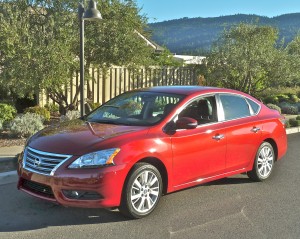
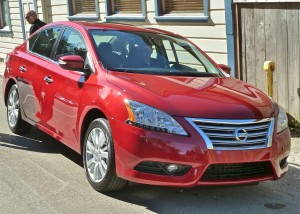
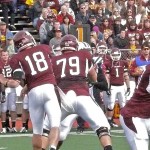
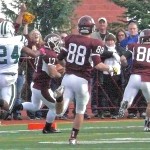

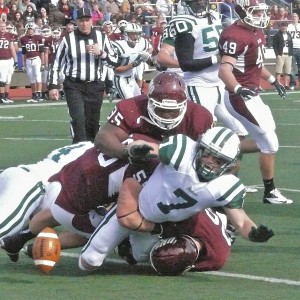
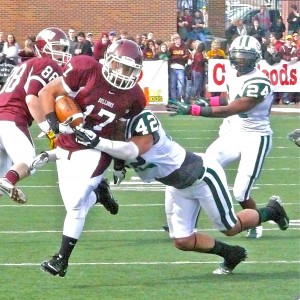
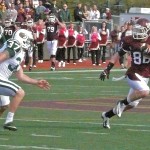
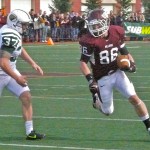


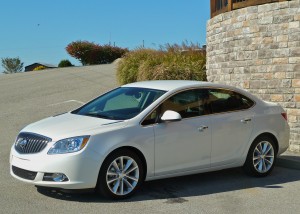
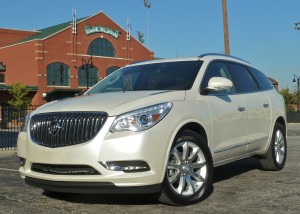
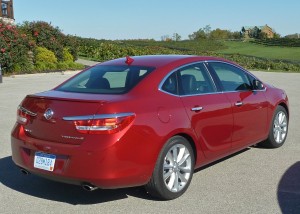
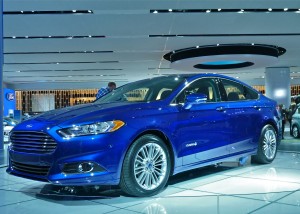

 John Gilbert is a lifetime Minnesotan and career journalist, specializing in cars and sports during and since spending 30 years at the Minneapolis Tribune, now the Star Tribune. More recently, he has continued translating the high-tech world of autos and sharing his passionate insights as a freelance writer/photographer/broadcaster. A member of the prestigious North American Car and Truck of the Year jury since 1993. John can be heard Monday-Friday from 9-11am on 610 KDAL(www.kdal610.com) on the "John Gilbert Show," and writes a column in the Duluth Reader.
John Gilbert is a lifetime Minnesotan and career journalist, specializing in cars and sports during and since spending 30 years at the Minneapolis Tribune, now the Star Tribune. More recently, he has continued translating the high-tech world of autos and sharing his passionate insights as a freelance writer/photographer/broadcaster. A member of the prestigious North American Car and Truck of the Year jury since 1993. John can be heard Monday-Friday from 9-11am on 610 KDAL(www.kdal610.com) on the "John Gilbert Show," and writes a column in the Duluth Reader.